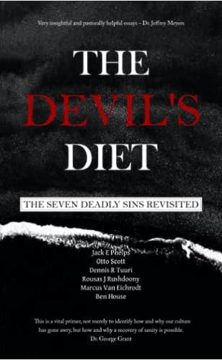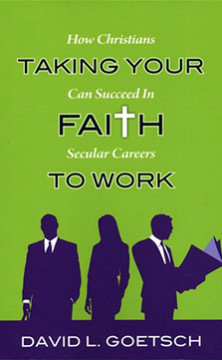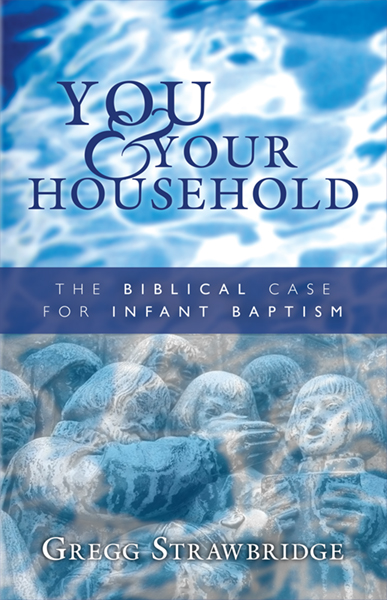The Born Again Christian
In American evangelical Christianity, the term “born again” is now used to describe a personal spiritual experience of conversion and often marks a new beginning in a person’s relationship with God. It is often associated with the concept of being “saved.”
The phrase itself is thoroughly Biblical and originates from Jesus’ conversation with the pharisee Nicodemus in the Gospel of St. John, where Jesus tells him, “Truly, truly, I say to you, unless one is born again he cannot see the kingdom of God” a. This conversation is often interpreted to emphasizes the need for a spiritual transformation in one’s relationship with God.
For modern evangelicals, being “born again” typically involves acknowledging one’s sinful nature b, recognizing Jesus Christ as Lord and Savior, and surrendering one’s life to Him. It is viewed as a moment of decision and personal commitment to follow Jesus. In many evangelical circles, the phrase “born again” is used to distinguish those who have had this personal conversion experience from those who did not have a individualized experience. This is often expressed as a criticism of liturgical churches (whether they be Presbyterian, Anglican, Catholic, Orthodox, etc.) that more often expect the corporate forms of worship and sacramental identity to sufficiently endow the believer with an individual Christian identity through the ecclesiastically means of grace like baptism, confirmation, catechesis, and the eucharistic service.
The Virgin Birth as the Born-Again Model
While having an individual experience is an important part of what it means to be an Evangelical, it is not the foundation of our Christian faith. Christianity is true with or without our individual experiences. When Nicodemus is told he must be born-again, Jesus is instructing the Jewish leader to first consider the death of his first self, not inviting him to leave organized religion. Jesus is pointing to mankind’s inability to escape the peril of sin and the need for something outside of our human faculties to save us.
Jesus is introducing the analogy of salvation that St. John and St. Paul will use in their own teaching: that mankind in Adam is dead and mankind in Jesus is born again.
St. John introduces this idea at the start of his Gospel with:
“He was in the world, and the world was made through him, yet the world did not know him. He came to his own, and his own people did not receive him. But to all who did receive him, who believed in his name, he gave the right to become children of God, who were born, not of blood nor of the will of the flesh nor of the will of man, but of God.”
St. John 1:10-13 (ESV)
When St. John says, “he gave the right to become child of God, who were born…” (emphasis added) he is placing salvation by Christ as the new birth of humanity. Yet, St. John clearly explains that this would not be by the “will of the flesh nor the will of man.” St. John answers the objection of men like Nicodemus who asked, “How can a man be born when he is old? Can he enter a second time into his mother’s womb and be born?” How can mankind be born-again? He can’t— in Adam, in the flesh, and in natural human history—mankind cannot be born again.
Yet, as St. Athanasius explains masterfully,
“Whereas men had turned toward corruption, [Christ] might turn them again toward incorruption, and quicken them from death by the appropriation of His body…”
On the Incarnation of the Word, St. Athanasius c
How is mankind born again? By the fully incarnated person of the Son through the Virgin birth. Athanasius also describes the Virgin Mary as a type of temple prepared for the new birth of this sinless man. This new mankind in Jesus begins with the single man made by God, the same that St. Paul called the “last Adam” and “second man” d in his First Epistle to the Corinthians. It is also what we confess each week in the Creed, “Who for us men and for our salvation came down from heaven, And was incarnate by the Holy Ghost of the Virgin Mary, And was made man…” e
The analogy is simple in that both the humanity of Adam and the humanity of Christ were made by God in special ways. They were both miraculous births by God’s intimate intervention. Both made from the uncorrupted materials: the man Adam is made of pre-curse dirt and the man Jesus is made from a virgin womb. For our salvation, mankind was born again.
The Death of Adam in the Death of Christ
St. Paul writes that, “We know that our old self was crucified with him..” f and in this we can frame our ‘old self’ to be the first Adam, mankind’s general guilt in volitional sins, and also the infection of humanity with what St. Augustine described as the “incurvatus in se” or ‘inward bend’ of sin in our nature. The new birth from the Virgin womb was to be the covenantal vessel to break the curse of Adam. Puritan scholar John Owen connects the affect of the death of the Son to the individual believer through Christ’s mediatorial office.
“The agent in, and chief author of, this great work of our redemption is the whole blessed Trinity…” writes Owen as a preface to his explanation that the Father sends the Son, born of the Holy Spirit to become an oblation for the life the world, “The Father loves the world, and sends his Son to die…” g But what is the mechanism by which Christ is able to carry the burden of sin if he knew no sin? How can his flesh bear injustice if he has kept the law perfectly? Here Owen carefully picks up on St. Paul’s baptism language to show Christ’s ability to function as the Father’s sent mediator. Owen writes, “The purposed imposition of his counsel, or his eternal counsel for the setting apart of his Son incarnate to this office, saying unto him, ‘Thou art my Son; this day have I begotten thee…” h Thus Owen understands that the baptism by St. John the Baptist in the Jordan was a heavenly ordination placing a born-again Adam as the priestly mediator between humanity and God. His role confirmed by the words from above, “This is my beloved Son, with whom I am well pleased.” i
By baptism death is heaped upon Christ’s priestly shoulders, just as God once used animal death to place the animal skin as garments on Adam and Eve j. By baptism, under the anointing of the Holy Spirit in the form of a dove, the burden of humanity’s sin is presented to this new high priest who must now provide a sacrifice for atonement k. The only acceptable sacrifice for sin is death and the only sufficient death is the sinless lamb of God – here the priest himself.
Here St. Paul writes,
“Do you not know that all of us who have been baptized into Christ Jesus were baptized into his death? We were buried therefore with him by baptism into death, in order that, just as Christ was raised from the dead by the glory of the Father, we too might walk in newness of life.”
Romans 6:3-4
The Grave as my Mother
The early Christians spoke of their baptisms as both their “grave” and their “mother.” l In that at the moment of baptism, the Christian was imitating Christ’s baptism by dying to the world and sin for the purpose of bringing new life into the world. As Calvin rightly says in his commentary, “What purpose is it that we die with him except that we may rise to a better life? And hence for no other reason does he slay what is mortal in us, but that he may give us life again.” Thus the death of the cross and the death of the old man was to be a precursor for the new life of the new creation of a new humanity.
The grave gives birth to a special type of triumph for Christ. He destroys death and secures eternal incorruption for those under his mediation and intercession. To quote one of Athanasius’s more difficult passages, “For He was made man that we might be made God” m or as St. Paul describes it, “So you also must consider yourselves dead to sin and alive to God in Christ Jesus.” n)
We, as believers, are united with Christ in His resurrection. St. Paul later explains that even the earth itself, everything around us, yearns and labors in anticipation of the glorious freedom that comes with being children of God. Before the end of all things, the world will undergo a transformation because the message of justification by faith initiates a change that starts with us and extends to all aspects of life.
St. Paul emphasizes that in every area, the objective is to reflect the profound implications of our great liberator, Jesus Christ, who is the head of the new humanity. Death no longer holds power over Him, and therefore it no longer holds power over us because we are united with Christ. We are now a people of victory, justice, and life.
Greater than the Garden
“Because the eternal Son of God, by his incarnation and mediation, exalts his people to a far higher state of being than our race, if unfallen, could ever have attained.”
Charles Hodge o
In conclusion, the virgin birth is truly a picture of our salvation. The earth was once a womb from which the seed of mankind, Adam, was grown from; and now from the Virgin Mary and the fruit of her womb, Jesus, mankind is born again. Gloriously this new humanity is guarded, guided, and preserved by a sinless federal head. Where Adam failed, Jesus cannot. This should inspire a unshakeable confidence in Christ’s elect as they seek to manifest his resurrection power in every area of life.
- John 3:3 ESV (back)
- see Sinner’s Prayer here (back)
- Translated by Archibald Robertson. From Nicene and Post-Nicene Fathers, Second Series, Vol. 4. Edited by Philip Schaff and Henry Wace. (Buffalo, NY: Christian Literature Publishing Co., 1892.) New Advent (back)
- 1 Corinthians 15:45–49 (back)
- Nicene Creed, quoted from the 1928 Book of Common Prayer, Protestant Episcopal Church in the United States (back)
- Romans 6:6 (back)
- The Death of Death in the Death of Christ, Owen (back)
- Psalm 2:7 (back)
- Matthew 3:17 (back)
- Genesis 3:21 (back)
- Leviticus 21 (back)
- Chapter VI. 1-14 The Christian life a living by dying. St. Paul’s Epistle to the Romans: A Practical Exposition by Charles Gore, M.A., D.D. [Volume I, London, 1899] (back)
- ibid. sec. LIV (back)
- Romans 6:11 (ESV (back)
- Hodge’s Commentary on Romans, Ephesians and First Corinthians. Amazon (back)

















Something else to consider. The virgin birth may typologically be a representation of salvation, but as mentioned in the article, scripturally speaking being resurrected with Christ is a picture of the consummation of the marriage between heaven and earth. The link is back to Song of Solomon 6 where the east wind blows through garden and the spices fill the air. Jesus’ body was prepared with 75 pounds of burial spices. Upon his resurrection the garden tomb would have been filled with the scent of the burial spices. The virgin tomb is the indicator of the new birth. Resurrected with Christ is also the fullfilment of Leviticus 12. 33 days of purification are set in analogy with 66 for a female child, and the ultimate fulfillment is the circumcision of Abraham at 99 (33×3). Christ’s resurrection as a field or a nation is the true fulfillment of the father of many nations in one Man. The many becoming one. One and the many being united as one flesh. The masculine being the singularity united with the feminine plurality with the two becoming one flesh. The mystery of Ephesians 5. One other small consideration. Jesus was unrecognizable upon His resurrection likely because He took the form of other people. He was the ultimate chameleon as Mark tells us. Taking another form He appeared to the two men on the road to Emmaus. I guess the question then becomes which bodies did He take the form of? Probably the Saints that were resurrected at His crucifixion. Exodus 4:22 is clear that the first born Son of God was the Israel. As the Israel of God, those who believe access the new temple by faith. Christ is no longer just the second member of the Trinity, He is now a humanity, a people who take on His name and identity as promised as the inheritance in Psalm 2. Humanity is the “flesh” put on Logos as the Father’s gift to the Son.